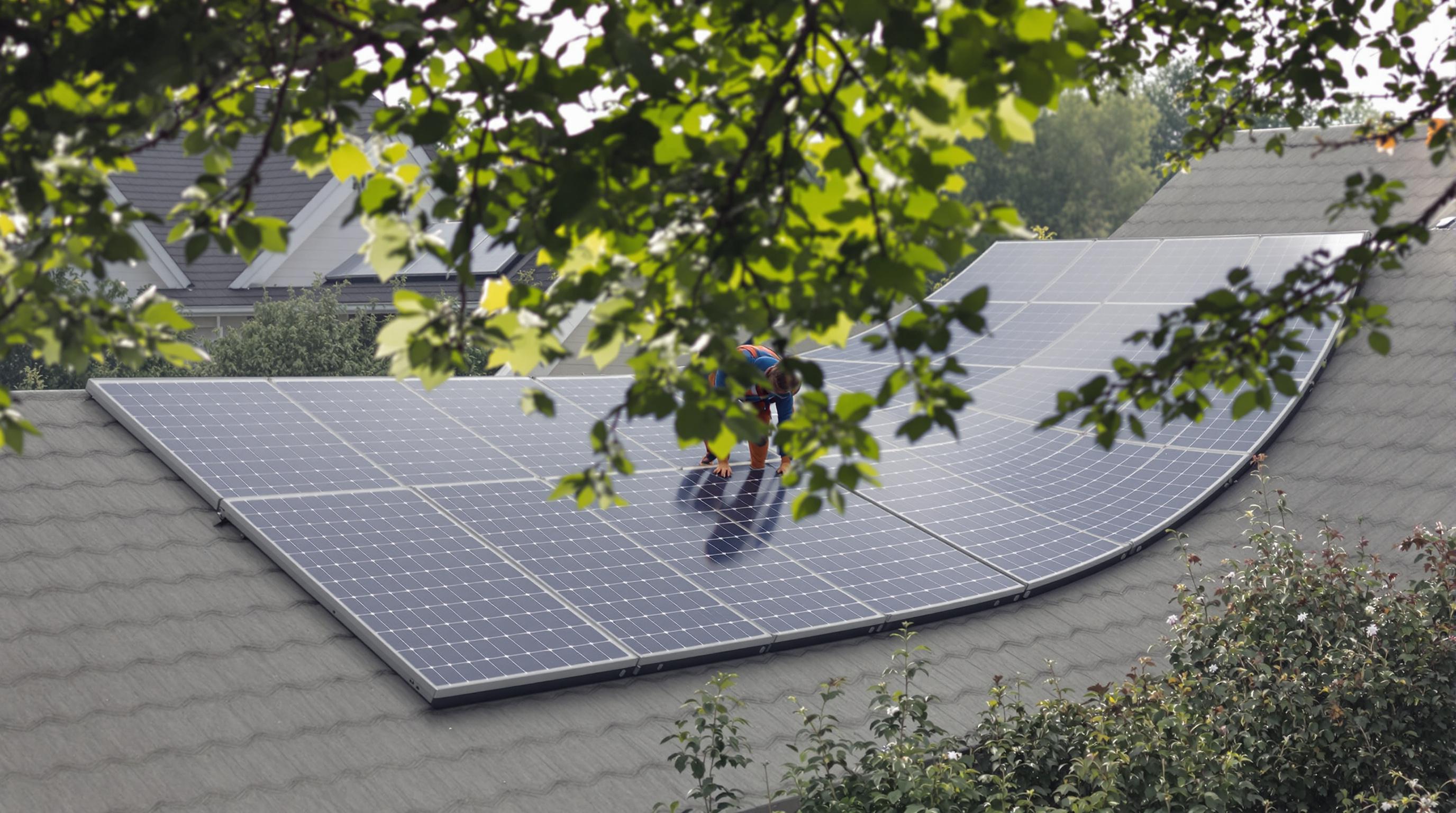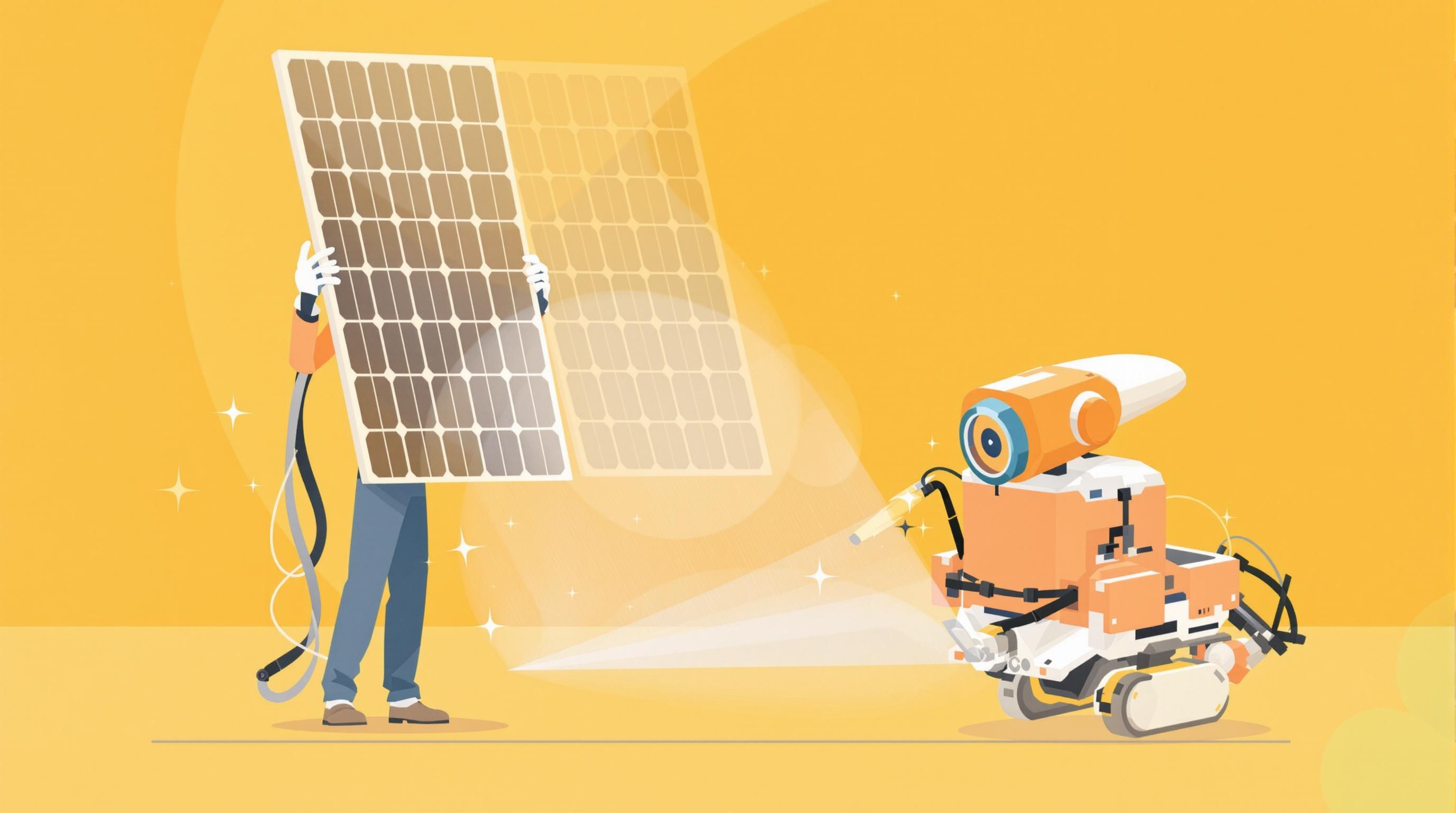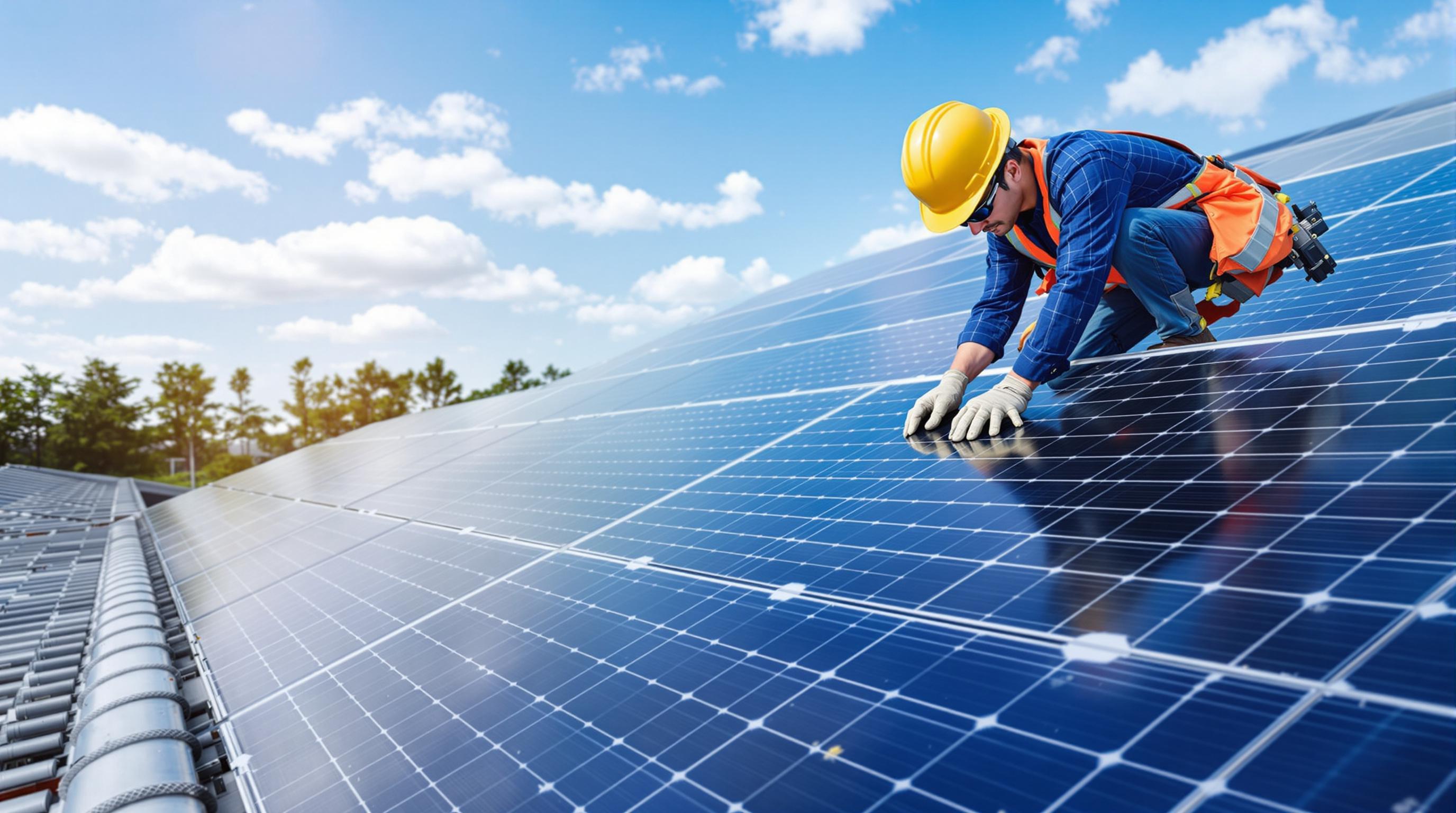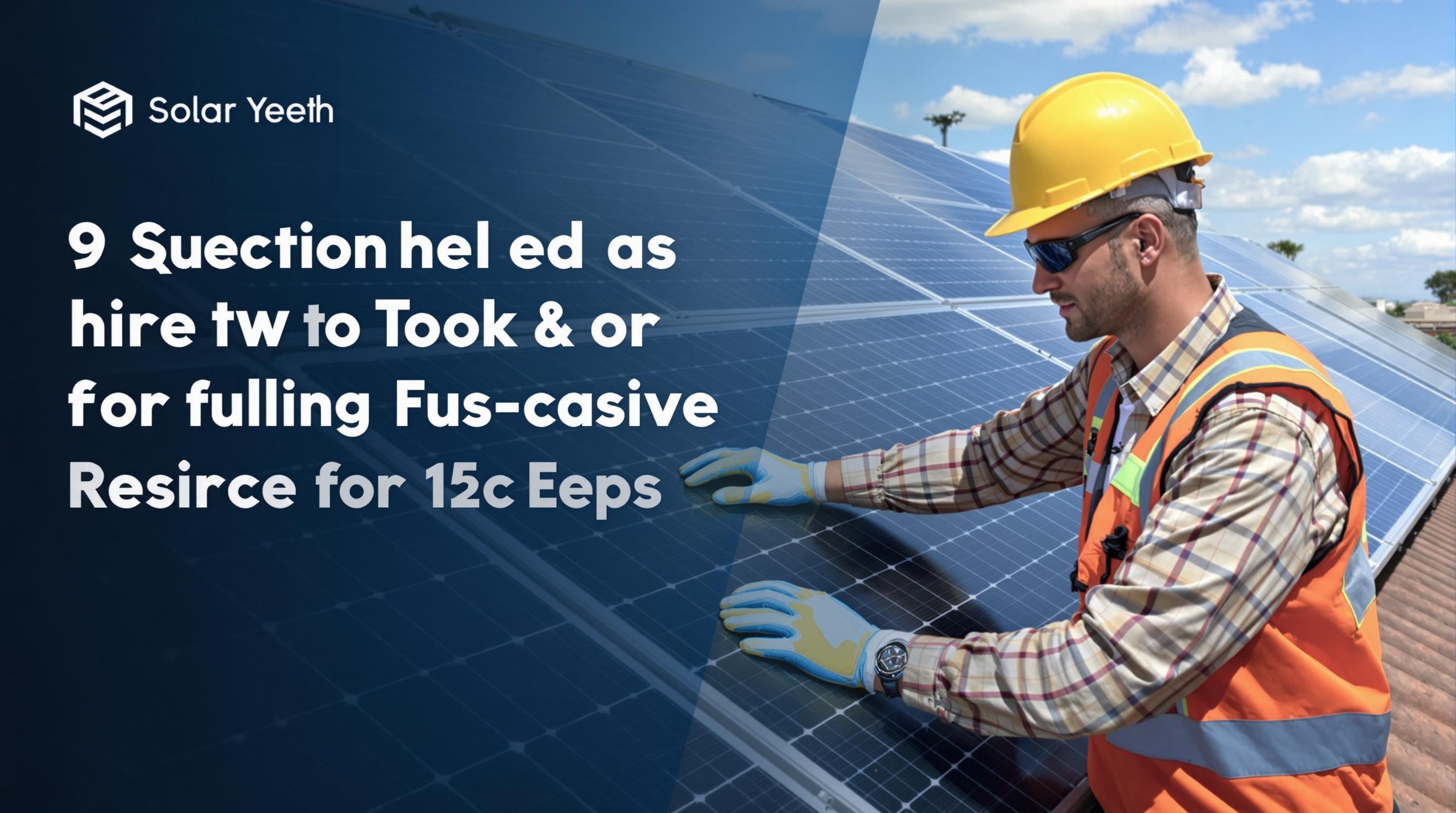Related Articles
- 6 Revolutionary Solar Panel Cleaning Robots Since 2019 Rated for Efficiency and Contractor Appeal
- How Unexpected Weather Patterns Are Shaping Homeowner Choices in Solar Installation Partnerships
- How Solar Inverter Noise Pollution Affects Urban Wildlife and What Manufacturers Are Overlooking
- How Solar Inverters Influence Home Resale Value and What Buyers Rarely Consider Before Purchase
- How Microclimates Secretly Shape Solar Energy Output in Unexpected Urban and Rural Landscapes
- The Quiet Role of Microclimates in Shaping Solar Harvesting Outcomes Beyond Conventional Efficiency Measures
How Unexpected Weather Patterns Are Shaping Homeowner Choices in Solar Installation Partnerships
How Unexpected Weather Patterns Are Shaping Homeowner Choices in Solar Installation Partnerships
Unexpected weather patterns are increasingly influencing how homeowners select their solar installation partners, merging practical concerns with environmental aspirations. This article explores these evolving dynamics through a blend of research, real-life narratives, and industry insights.
A Personal Journey Into Solar Amid Climate Surprises
At 42, I've witnessed firsthand how a freak hailstorm shattered my neighbor’s solar panels last summer, a vivid reminder that weather extremes demand smarter investment in solar tech. It’s not just about flashy panels or rebates anymore; it’s about choosing partners who understand resilience and adaptiveness as much as efficiency and cost.
Why Weather Volatility is More Than a Passing Concern
Consider this: According to NOAA, the U.S. has experienced a 27% increase in severe weather incidents over the past two decades. This rise directly impacts solar infrastructure choices. Homeowners are no longer simply comparing inverter brands or panel efficiencies but seeking companies that can offer products and warranties designed for unpredictability.
The Case Study of Tucson, Arizona: Sunlight Meets Sudden Storms
Tucson’s traditionally sunny climate is ideal for solar, yet in recent years, rapid monsoonal shifts bring intense storms with damaging winds. Maria Lopez, a homeowner there, shared her experience: "I had to switch from a company that couldn’t assure protection against hail and wind to one with reinforced panel mounts and better storm response plans." Businesses catering to such needs find a growing loyal client base, illustrating a critical market adaptation.
Statistics That Speak to the Trend
Industry reports suggest that over 60% of homeowners who experienced novel weather because of climate change are re-evaluating their current solar installations or vendors. This shift isn't trivial; it affects supplier reputations and bottom lines significantly.
From a Formal Perspective: Risk Management in Solar Partnerships
The solar sector is under close scrutiny by regulatory bodies to enhance the reliability of equipment amid escalating climate risks. Contracts now often include clauses related to performance guarantees under variable weather conditions, pushing installation firms to innovate. According to a 2023 white paper by the Solar Energy Industries Association (SEIA), approximately 45% of new solar projects integrate risk assessment metrics tied to anomalous weather patterns.
Humor in Unpredictability: Weather vs. Solar Panels
Imagine solar panels as divas who perform best under the spotlight but throw a tantrum if there’s a surprise thunderstorm. Homeowners joke about their panels sulking when a sudden downpour interrupts their sunbath, but the joke hides a serious truth: only the toughest technicians and the sturdiest materials keep the energy flowing.
Consumer Conversations: Early Morning Chats on Solar Choices
Over coffee, local homeowner Jake quips, “I picked a solar guy because he talked more about windproof mounts than just wattage. Better safe than sunburned, right?” This kind of casual insight reflects a larger trend where practical weather considerations start to outweigh mere aesthetics or upfront cost.
Engaging Storytelling: A Family’s Solar Saga
Last winter in Vermont, the Miller family faced unexpected ice storms knocking out power for days. Their solar system, installed just a year prior, performed admirably, but only after a mid-installation consultation with their provider to upgrade batteries and introduce ice-resistant panel coatings. Mrs. Miller remarks, "Our installer didn’t just sell us panels; they built a partnership to weatherproof our home energy."
Persuasive Insights: Why Climate Adaptation Must Guide Your Solar Partner Choice
The solar market is crowded. Yet, selecting a partner solely on price or brand cachet is no longer viable. Homeowners are urged to prioritize companies demonstrating agility and environmental forecasting expertise. Case in point: firms offering adaptive technology and comprehensive post-installation support see customer satisfaction rates spike by nearly 30%, according to GreenTech Analytics.
Statistics Often Overlooked: The Cost of Ignoring Weather Risks
Ignoring emerging weather patterns can translate to 15-25% higher repair and replacement costs within a decade. These figures underscore the financial wisdom in investing early with informed, weather-savvy providers.
Conclusion: An Era of Partnership Driven by Climate Realities
The interplay between sudden weather shifts and solar technology demands a redefined client-installer relationship. Today's homeowners seek assurances that their energy investment withstands nature’s eccentricities — a call for installation firms to evolve or risk obsolescence. Navigating this complex terrain offers a richer, more secure solar experience fueled by resilience and shared knowledge.




